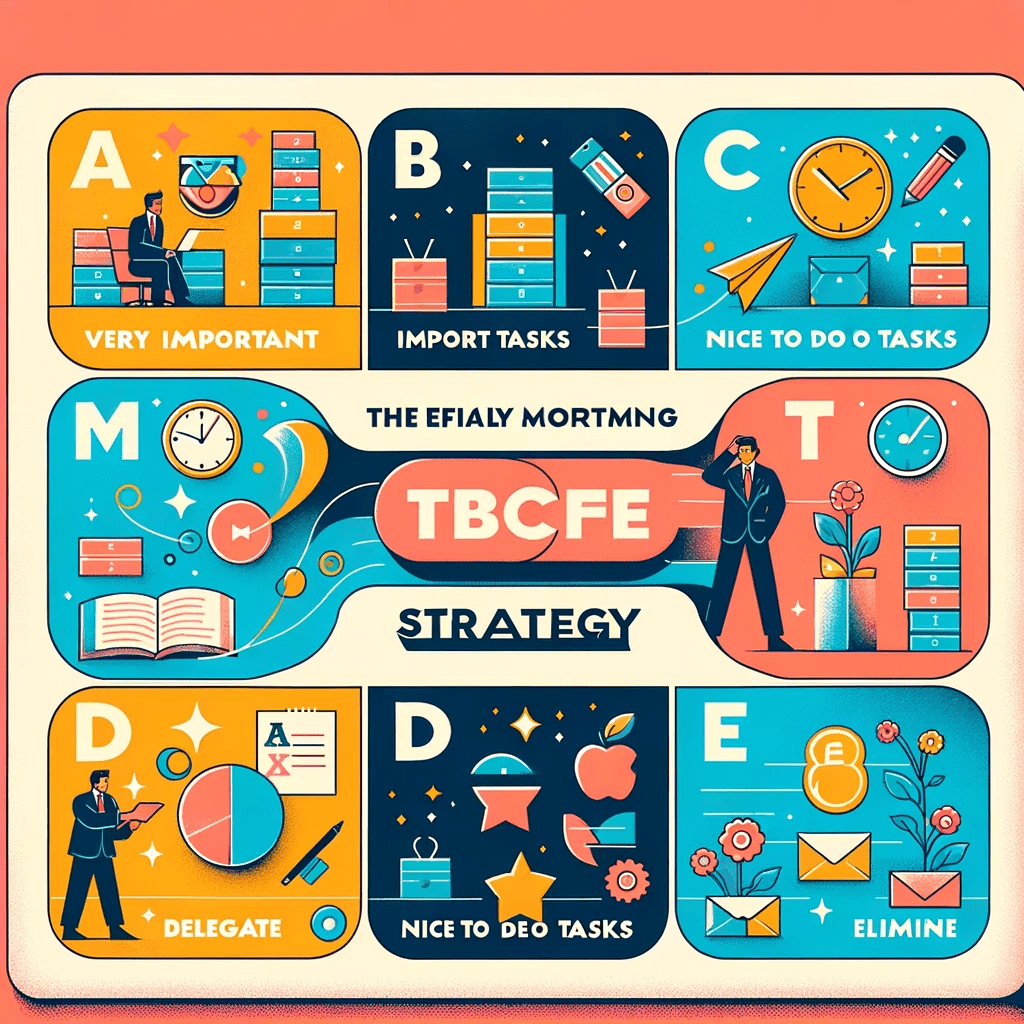Today’s lesson goal: Understand and apply the ABCDE strategy for effective time management.
Introduction to Time Management
Time management is a critical skill in our fast-paced world. It helps us prioritize tasks, work efficiently, and balance our personal and professional lives. One effective method for managing time is the ABCDE strategy.
The ABCDE Strategy Explained
This strategy involves categorizing tasks based on their importance and urgency.
- A – Very Important Tasks: These are tasks that have significant consequences if not completed. For example, preparing for a crucial work presentation. Such tasks are your highest priority.
- B – Important Tasks: These tasks are important but not as critical as ‘A’ tasks. Missing these tasks might have moderate consequences. An example could be replying to important emails.
- C – Nice to Do Tasks: These are tasks that have no significant consequences if not done. For example, organizing your workspace. While they can increase efficiency or comfort, they are not urgent.
- D – Delegate: These are tasks that can be assigned to others. Delegating helps you focus on tasks that require your specific skills or attention.
- E – Eliminate:
These tasks are not important and do not contribute to your goals. For example, browsing social media during work hours. These should be eliminated from your schedule to save time and focus.
Applying the ABCDE Strategy
- List Down Your Tasks: Start by listing all the tasks you need to do.
- Categorize Each Task: Use the ABCDE categories to prioritize your tasks.
- Start with ‘A’ Tasks: Tackle these tasks first as they are the most critical. Avoid the temptation to start with easier, less important tasks.
- Limit ‘B’ Tasks Time: Allocate specific time slots for ‘B’ tasks to ensure they are addressed but do not overrun your schedule.
- Fit in ‘C’ Tasks: These tasks can be fitted into short breaks or less busy periods.
- Delegate ‘D’ Tasks: Identify tasks that can be efficiently handled by others and delegate them.
- Eliminate ‘E’ Tasks: Be ruthless in cutting out these tasks. They are distractions that impede productivity.
Benefits of the ABCDE Strategy
- Improved Focus: By prioritizing tasks, you focus on what’s truly important.
- Stress Reduction: Knowing your priorities reduces anxiety about uncompleted tasks.
- Increased Productivity: Eliminating or delegating less important tasks frees up more time for critical ones.
- Better Decision Making: It helps in making informed decisions about how to allocate your time.
Challenges and Tips
- Overestimating Task Importance: Be cautious not to label too many tasks as ‘A’.
- Delegation Difficulties: Trust your team and learn to let go of some control.
- Consistency: Consistently applying this strategy can be challenging. It requires discipline and practice.
Conclusion
The ABCDE strategy is a simple yet powerful tool for effective time management. By categorizing tasks based on their importance and urgency, you can prioritize better, increase productivity, and achieve a more balanced life.
For Further Reading and Exploration:
- Wikipedia: Time Management
- YouTube: Computerphile – Time Management for Programmers
- Specific Link: Brian Tracy’s Blog on ABCDE Method
